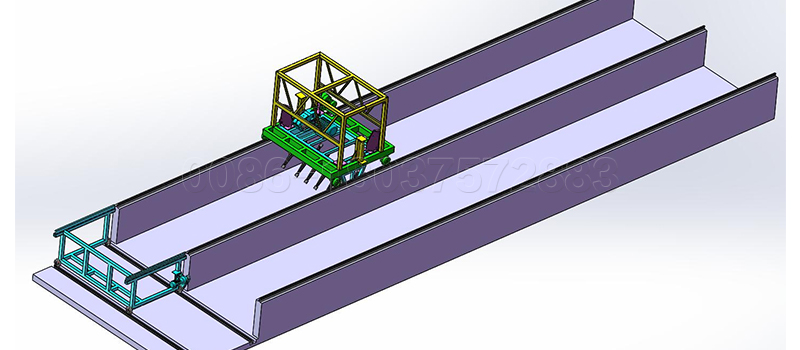Composting process is the degrading and stabilizing of organic materials by microorganisms under the appropriate moisture content, oxygen concentration and other conditions, so as to achieve the purpose of killing parasite eggs and harmful microorganisms. The composted material won’t contain pathogenic bacteria and weed seeds, so it’s suitable for application in soil to bring crops higher nutrition content.
Composting process generally includes fermentation, turning and aeration. As a recommendation, the groove type aerobic composting has distribution system, overturning system and aeration system:

1. Groove type composting machine: to meet the requirements of moisture and pH in material fermentation, some microbial bacteria needs to be added. The turning machine can give full play to its stirring function, improve the permeability of raw materials, absorb a lot of air at the same time, and increase the temperature of the compost pile. If the temperature is too high, it can absorb fresh air again, so that the temperature will drop again.
2. Distribution truck: it can evenly distribute the materials in the composting groove, so that the forklift doesn’t have to go in and out of the grooves frequently. It greatly reduces the transfer cost of raw materials and improve the work efficiency.
3. Moving crane: each groove aerobic composting system is generally composed of 8-10 composting grooves, but generally only need one compost turner. In order to save investment, it’s necessary to switch the position of turning machine between different composting grooves, and the moving crane plays a good role.
4. Aeration system. The function of aeration system is to ventilate and oxygenate the fertilizer materials in grooves, so that the microorganisms in the materials can interact with oxygen, and then the materials can be fully composted to produce valuable humus. It also greatly shortens composting time.
